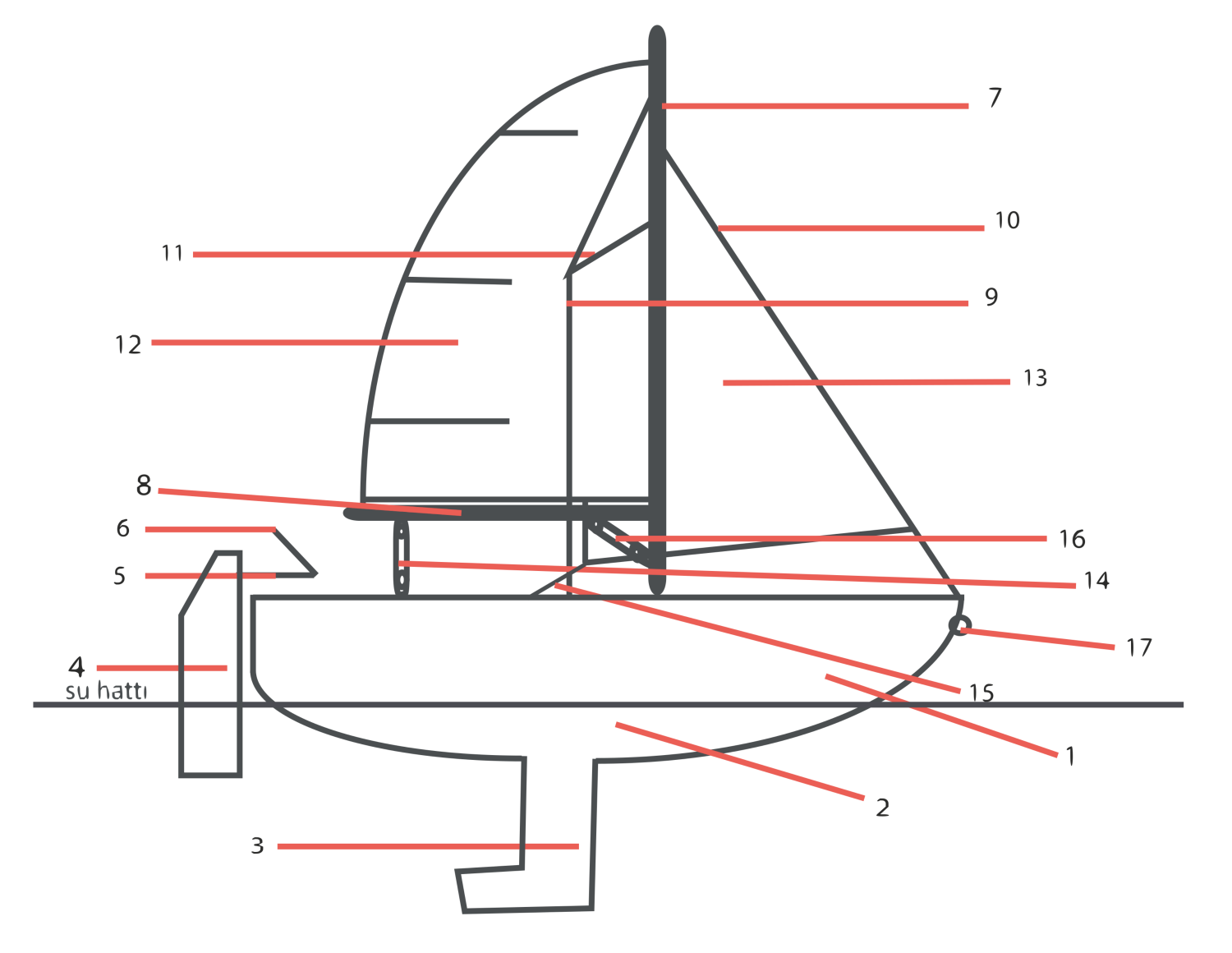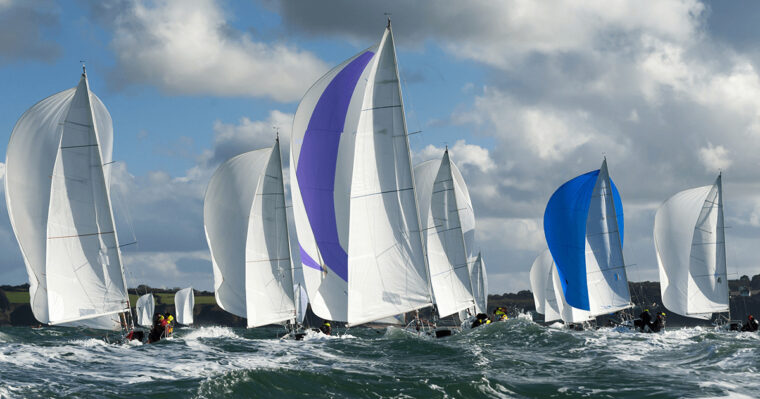Introduction
Sailboats, also known as sailing boats, are vessels that are propelled using the power of the wind. They come in a variety of sizes and shapes, from small dinghies to massive yachts, and are popular for both recreational and competitive sailing. Sailboats typically have one or more masts and are equipped with sails that can be adjusted to harness the wind’s energy and propel the boat forward. Whether you are a seasoned sailor or a beginner, understanding the important aspects of sailboats can help you make informed decisions when it comes to buying, using, or maintaining one.
What is a Sailboat?
A ship that has a stretched thick cloth in order for it to take advantage of the wind power at sea is named a “sailboat”. The stretchy cloth allows the craft to move properly by fitting it to the pole which stands side by side to form a large surface called a sail.
How Many Types of Sailboats Are There?
Sailboats are a group of boats with many varieties. Some of the boat groups are: Ketch, sloop, catamaran and rowing sailboat.
What is the Average Speed of a Sailboat?
In general, the speed of a sailing ship can vary according to the speed and direction of the wind, the design of the sails, the structure and dimensions of the ship, the size of the waves in the water and the load of the ship. For example, a sailing ship’s speed can be between 10 km/h and 20 km/h in a light wind with a small deck load, while the same ship can travel between 5 km/h and 10 km/h in a strong wind with a heavy load.
What are the Parts of a Sailboat?

1. Hull 7. Mast 13. Genoa / Jib
2. Keel Vang 8. Boom 14. Main Sheet
3. Centerboard Vang 9. Shroud 15. Jib Sheet
4. Rudder / Wash 10. Headstay 16. Sternburton
5. Tiller 11. Spreader 17. Becket
6. Tiller Extension 12. Mainsail
What are Sailboats Made of?
Sailboats are usually made of durable, flexible and lightweight materials such as polyester, mother-of-pearl or dacron. These materials allow the sails to resist the effects of the wind. In addition, metal winches, rods and other mechanical parts are used to facilitate the opening and closing of the sails and the reversing movements.
How Does a Sailboat Work?
There are 2 forces that affect the movement of the sailboat:
Thrust: This is the name for the wind strength, which is the most basic principle for the movement of the sailboat and it affects vertically. The resulting effect is when the wind hits the sailboat from the abaft, driving the vessel forward.
Suction Force: This is necessary for boats to be able to move easily against the wind. The force of the wind flows from both sides of the sail, resulting in a pressure difference occurring due to the difference between the distance traveled by the two streams of air. With the force of the pressure difference, the sailboat is absorbed towards the wind. Sailboats can not cruise directly into the wind; in order to gather way with the sailboat, it is necessary to travel at an angle of about 45 degrees against the wind.
What are the Course Forms of Sailboat?
The cruise forms of sailboats are named differently according to the course of the boat and the angle of the wind in relation to the course set.
Main Courses
Point: This is the course where a sailboat makes an angle of 35-45 degrees against the wind, and the sails come close to the center of the boat by pulling the becket.
Beam Reach: Beam reach is the course where the boat takes the wind at 90 degrees and the sails are pulled up to 45 degrees against the boat with the becket.
Scud: Scud is a relaxed course where the boat takes the wind from behind. To make a 180 degrees scud causes unnecessary and dangerous jibing, and hence the scud should be performed at 170 degrees.
Mid Courses
Close Reach: This is the course where the boat sails between point and broad reach, with a course and angle of 60-65 degrees and derricks point bar that stays in the quarter.
Broad Reach: This is the course where the boat sails between the broad reach and scud course with an angle of 130 -140 degrees, the angle of the sails are then kept at 65-75 degrees.
What are the Sailboat Maneuvers?
“Tack” and “Jibing” are two maneuver types for sailing boats.
What is the Tack?
Tack is the maneuver that is performed when you want to reach the destination by turning the bow of the boat towards the direction in which the winds are blowing. Tack is a logical maneuver when your course is on point. With the point course, if you make an angle of 45 degrees against the wind, with a hard alee, the boat will need to make a turn of 90 degrees.
What is the Jibing?
If the destination we want to reach is in the opposite direction to the way the wind blows, rather than with a tack, you would perform a maneuver by turning under the wing – this is called “jibing”. You do the jibing maneuver when you are sailing with courses scud and broad reach.
Berthing and Dispersion with a Sailboat
Berthing (Go Alongside)
- The speed should be reduced when approaching the berth.
- Mooring lines (hawser connecting the boat to the port) and fenders (a balloon that prevents the boats from being drawn and damaged in case the boats lean against the lima, marina, or to each other) need to be ready to use.
- The berthing and dispersion moves of other boats need to be observed during berthing to a marina.
- Berthing should be performed against the wind as it is easier to control.
- When berthing against the wind, the angle should be 30-45 degrees angle.
- If there is a flow during berthing, it must be understood why.
Lift-Off (Shove Off)
- Before lifting off, attention needs to be paid to make sure the fore and stern hawsers are connected.
- The boat should then be operated at an idle speed.
- All hawsers should then be unraveled and pushed to the shore.
- Machines should be ahead and the rudder should be turned to the right direction.
- Lastly, the boat should leave the area where it is connected.
Mooring and Points to Consider During Mooring
- Firstly, the mooring area should be selected from the map.
- When the boat approaches the mooring, the speed should be lowered while the flow is at the downwind position.
- The boat should be stopped and the anchor lowered until it reaches the seafloor.
- The boat should then be tamed and the anchor should be maintained.
Structure of Sea Bottom (moss, rock, sand etc): It is important to know the sea bottom structure of the region you are in, in order to accordingly choose the anchor type and avoid trouble during the anchoring process.
Wind: If there is no wind, anchoring will be quite easy as there is no driving force. For windy weather, it is important to anchor at a place that cuts you off from the waves and wind for security reasons.
Depth: For safe anchoring, anchor chain must be at least four times the depth of the water. It should not be forgotten that the chain holds our boat, not the anchor.
Diameter Oscillation: Oscillation is the circular gliding to the flag or to the starboard, which happens when the wind is changing direction often and the diameter of this circular motion is called a “diameter oscillation”. The diameter of the oscillation should be calculated correctly by taking the other boats into consideration.
Sailor’s Hitches
Figure Eight: The figure-of-eight knot is a stopper knot that is tied at the end of the rope in order for the rope not to get loose from the block.
Cow Hitch: The Cow Hitch, also called the Lanyard Hitch, Lark’s Head and Lark’s Foot, is used to secure a rope to a post or other object including another rope
Whip: It is the name given to the tie made by wrapping tightly with a thin rope so that the ends of the ropes do not open.
Buntline Hitch: This is used to tie up certain things like the anchor or buoy when they hang down from the boat, this is also known as a “Meza volta hitch”.
Bowline Hitch: This is called a bowline as it is often used for tying a loop in a mooring line and tying the bow of the boat to the dock. This is safer than devices with metal locks.
Sheep Shank: This is a knot that is thrown to temporarily relieve the damaged part of the rope from heavy load or to shorten the length of the rope.
Half Hitch: This is the tie that is used to attach the end of a rope to a mast, eyebolt, anchor, sail matafion and a deck structure.
Take in a Reef
This is when the sail is made smaller by tying a knot in the windshield at the ends of the sail in windy and stormy weather conditions. The purpose is to prevent the sail from tearing in rough conditions or to prevent the sailboat from drifting out of control due to excessive wind. However, rather than employ this technique, many sailors prefer not to open the mainsail at all in difficult weather conditions and sail with the genoa sail.
What is Wing and Wing?
The mainsail blocks the wind to the genoa, and when the sailboat cruises it takes the wind from the stern. Wing and wing is the cruising type when the genoa and the mainsail hoist the sail to two opposite sides and therefore get an advantage from the wind.
For wing and wing sail;
- The wind needs to come from the stern.
- It needs to be on scud.
- The wind needs to come exactly from the bearing pintle.
What is ‘Heaving To’?
Heave to is a method for halting the sailboat. It is a method often used in heavy weather conditions. In emergency situations such as when someone falls overboard into the sea, when your boat breaks down, or even when you want to take a break due to harsh weather conditions, you can use the heave as a method to bring the sailboat to a stop.
Heave to When Going Towards the Wind
- Firstly, you need to tack without touching the genoa (by this way the genoa stays the opposite way) and the mainsail sheet is abandoned.
- The rudder is slowly turned to the wind and then locked.
- Heave to when the wind comes from the back and the genoa sheet is pulled during cruising on a close reach and then jibed.
- The rudder is then slowly turned towards the wind and then locked.
Heave to When the Wind Comes From the Back
- The genoa sheet is pulled during cruising on a close reach and then jibed.
- The rudder is then slowly turned towards the wind and then locked.
Feather on the Sail
Thin ribbon threads on the sail, called “feathers”, are placed where we want to observe the airflow in the sails, that is, both upwind and downwind. When a regular and correct airflow occurs on the sail, these threads fly parallel to the ground. However, when the sails are trimmed incorrectly and the airflow over them is mixed, the threads start to flutter.

